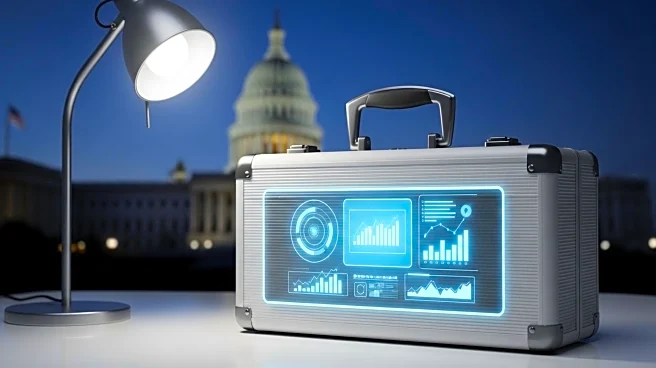What is the story about?
What's Happening?
The Trump administration announced a new policy imposing a $100,000 charge for H-1B worker visas. This decision is expected to have significant implications for various industries across the United States, particularly the technology sector, which heavily relies on H-1B visa holders. The policy change comes amid ongoing discussions about immigration reform and its impact on the U.S. labor market. The H-1B visa program is designed to allow U.S. companies to employ foreign workers in specialty occupations that require theoretical or technical expertise. The new charge could potentially deter companies from hiring international talent, thereby affecting their operations and competitiveness.
Why It's Important?
The imposition of a $100,000 charge on H-1B visas is likely to have a profound impact on the U.S. technology industry, which is a major beneficiary of the H-1B program. Companies in this sector often rely on skilled foreign workers to fill critical roles, and the increased cost may lead to a reduction in hiring or a shift in recruitment strategies. This could result in a talent shortage, affecting innovation and growth within the industry. Additionally, the policy may influence broader immigration debates, as stakeholders assess the balance between protecting domestic jobs and maintaining global competitiveness. Industries that depend on specialized skills may face challenges in adapting to this new financial burden.
What's Next?
As the new charge takes effect, companies and industry groups are likely to respond by lobbying for changes or seeking alternative solutions to meet their workforce needs. There may be increased pressure on lawmakers to reconsider the policy or introduce measures that mitigate its impact. Businesses might explore other visa categories or invest in domestic training programs to bridge the skills gap. The policy could also prompt discussions on the future of immigration reform, as stakeholders evaluate its implications for the U.S. economy and labor market.
AI Generated Content
Do you find this article useful?













